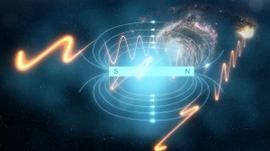Ancient and massive: How do supermassive black holes form? Filippos Koliopanos
le 18 oct 2019 de 11h00 à 13h00
Supermassive black holes (SMBHs; masses of ≳10^6M⊙) lie at the center of most (if not all) galaxies. As they grow via accretion, as active galactic nuclei (AGN), they become thousands of times brighter than the galaxies that host them. As a result, they have a dramatic impact on their hosts, determining the formation and evolution of stars and galaxies. Despite their importance and excellent documentation (culminating with the recent « picture » of the event horizon of the SMBH of galaxy Messier 87), basic questions regarding their formation and evolution remain unanswered. SMBHs grow from mass accretion onto small seeds (e.g. ~stellar mass black holes). However, if any accreting object becomes bright enough, then its radiation pressure will essentially push back the accreted matter, stopping the process. Accretion rate on all objects is limited. This is known as the Eddington limit. Our recent discoveries of SMBS with >10^7 Msol within less than 800 million years from the big bang, reveal that SMBHs form very early and very fast. This means that they must either overcome the Eddington limit by thousands of times or grow from extraordinary massive initial seeds. Both these scenarios involve numerous unsolved problems. In my seminar I will review our current understanding on the formation of SMBHs and present open research questions to the students and aspiring researchers of the M2 program.





